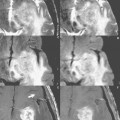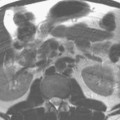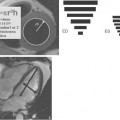57 Fat Suppression: Short Tau Inversion Recovery (STIR)
In inversion recovery (IR) imaging, suppression of the signal from adipose tissue can be achieved by exploiting the short T1-relaxation time of fat (see Case 20). An IR sequence starts with a 180° pulse, which tips the longitudinal magnetization antiparallel to the main magnetic field direction. Immediately after this inversion, the longitudinal magnetization begins to relax back to the equilibrium orientation, parallel to the main magnetic field. The time between the center of the inversion pulse and the center of the excitation pulse of the imaging sequence is called the inversion time (TI). The longitudinal magnetization of fat, as it recovers after the 180° pulse, crosses from negative to positive, passing through zero. If the excitation pulse of the imaging sequence is applied at that point in time (as in STIR), little or no transverse magnetization is generated and little MR signal is detected from fat (Fig. 57.1)
Stay updated, free articles. Join our Telegram channel

Full access? Get Clinical Tree








